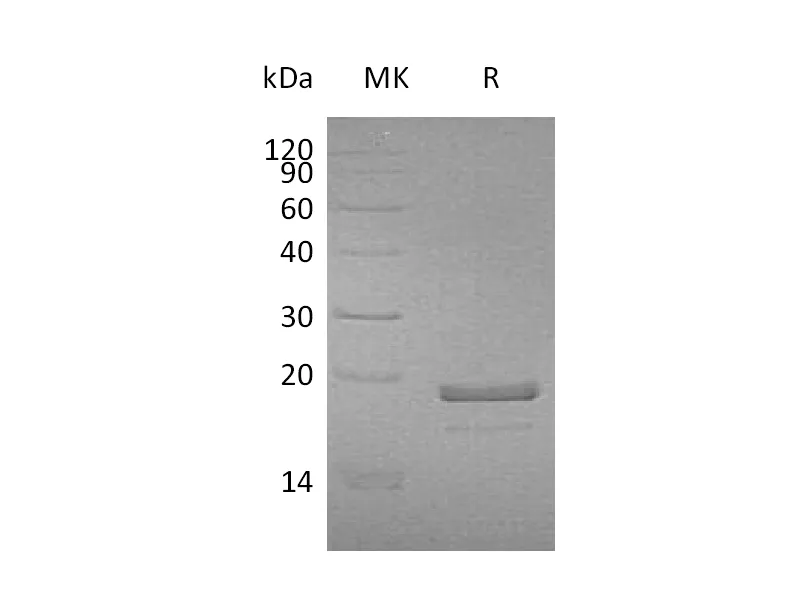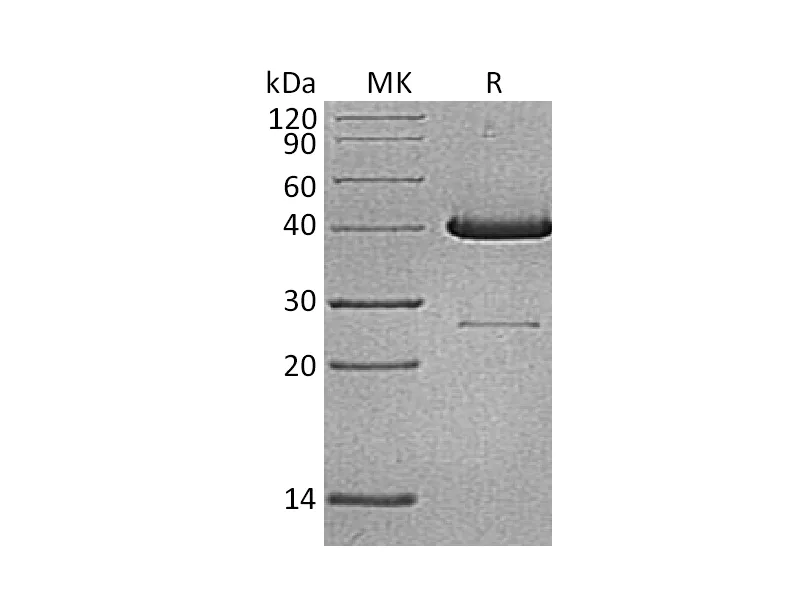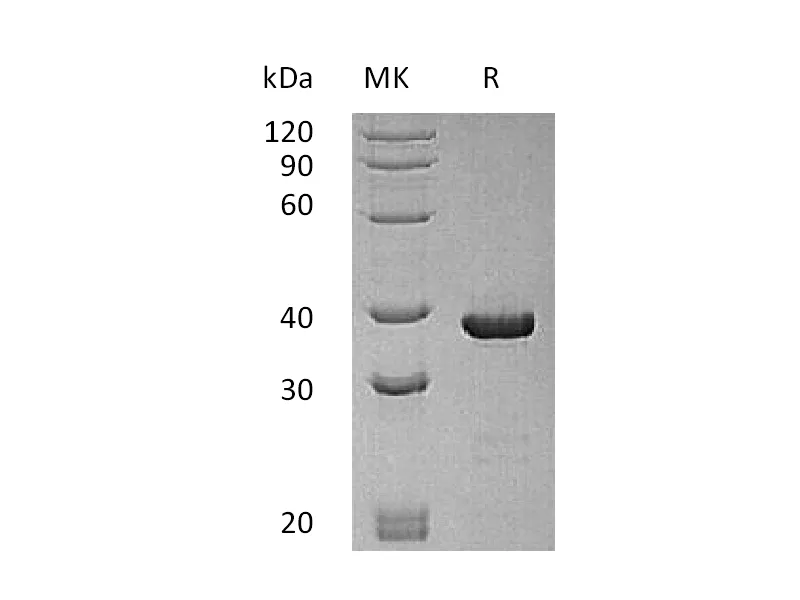| 产品名称 |
Recombinant Mouse PD-1 (C-6His) |
| 英文名称 |
PD-1/CD279/PDCD1/Programmed cell death protein 1 |
| 纯度 |
Greater than 95% as determined by reducing SDS-PAGE |
| 内毒素 |
<1 EU/µg as determined by LAL test. |
| 蛋白构建 |
Recombinant Mouse Programmed Cell Death Protein 1 is produced by our Mammalian expression system and the target gene encoding Leu25-Gln167 is expressed with a 6His tag at the C-terminus. |
| Accession |
Q02242 |
| 表达宿主 |
Human Cells |
| 种属 |
Mouse |
| 预测分子量 |
17.2 KDa |
| 制剂 |
Lyophilized from a 0.2 μm filtered solution of 20mM Tris-HCl, 150mM NaCl, pH 8.0. |
| 运输方式 |
The product is shipped at ambient temperature.Upon receipt, store it immediately at the temperature listed below. |
| 稳定性&储存 |
Store at ≤-70°C, stable for 6 months after receipt.Store at ≤-70°C, stable for 3 months under sterile conditions after opening. Please minimize freeze-thaw cycles. |
| 复溶 |
Always centrifuge tubes before opening.Do not mix by vortex or pipetting.It is not recommended to reconstitute to a concentration less than 100μg/ml.Dissolve the lyophilized protein in distilled water.Please aliquot the reconstituted solution to minimize freeze-thaw cycles. |
| 分子别名 |
| Programmed cell death protein 1;PD-1;CD279;Pdcd1;mPD-1 |
| 背景介绍 |
| Programmed Death-1 (PD-1), firstly cloned from mouse T cell hybridoma 2B4.11, is one member of CD28/CTLA-4 superfamily. PD-1 belongs to type I transmembrane protein and acts as an important immunosuppressive molecule. The cytoplamsic tail of PD-1 contains two structural motifs, an immunoreceptor tyrosine-based inhibitory motif (ITIM) and an immunoreceptor tyrosine-based switch motif (ITSM) formed by two tyrosine residues which make the difference in PD-1 signal mediating. Mouse PD-1 is expressed in thymus and shares about 69% aa sequence identity with human PD-1. Recently, programmed death-1 (PD-1) with its ligands, programmed death ligand B7H1 (PD-L1) and B7DC (PD-L2), was found to regulate T-cell activation and tolerance, upon ligand binding, inhibiting T-cell effector functions in an antigen-specific manner. PD-1 gene knocked out mice would induce some autoimmune diseases, which suggests that PD-1 acts as a co-inhibitory molecule actively participating in maintaining peripheral tolerance. Thus, PD-1 may be a useful target for the immunologic therapy of carcinoma,infection,autoimmune diseases as well as organ transplantation. |
注意事项
本司产品仅用于科研,不用于临床诊断和治疗




